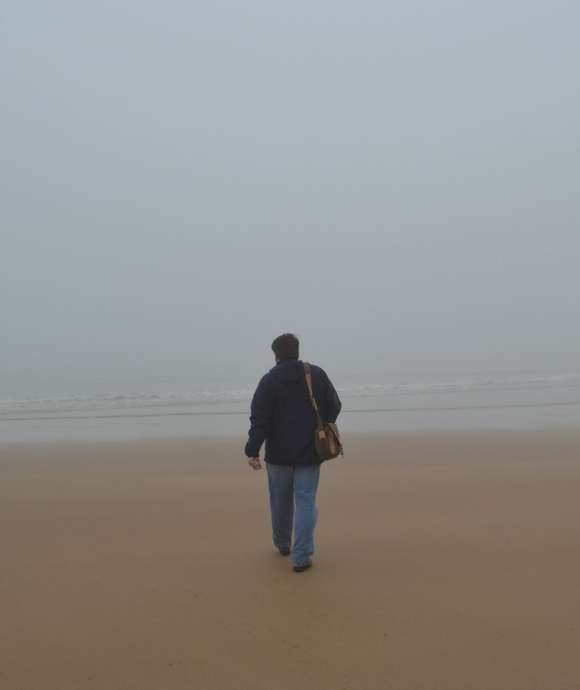Top Image: Omaha Beach Memorial with Les Braves Memorial in the background, Normandy, France. Credit: Keith Huxen.
On a Museum Educational Travel tour to Normandy, France, in March 2014, we visited Omaha Beach. Fog and mist hung over the landscape, weather that was very different from the landings which took place there on June 6, 1944, but was very evocative for visitors who were trying to imagine what it must have been like to be there back then. Of course, the sounds we heard were gentle lapping waves, soft winds, an occasional gull, and our own whispers, without the rips and thuds of whizzing bullets, explosions, splashes, aircraft, shells overhead, shouting, and agonizing screams. At Saint-Laurent-sur-Mer we approached the beach. Before reaching the shoreline, we approached a stone monument, flanked by the flags of the Allies, bearing a simple message in French and English: “The Allied forces landing on this shore which they call Omaha Beach liberate Europe June 6th, 1944.”
Since the 60th anniversary of D-Day in 2004, a memorial known as Les Braves has stood beyond the stone monument on the beach itself. Its tall metal towers and curved structures are meant to evoke themes of hope, freedom, and fraternity, the unifying motives of the Allied troops who came ashore on D-Day. I believe that Les Braves may also signify the violent explosions and rising spirits of the dead on the beach.
The tide was out that day, so my wife and I walked as far as we could across the wet sands into the mist towards the English Channel. After losing sight of the beach, we existed in suspended time for some minutes—with nothing recognizable around us except the wet sand and fog—before we finally arrived at an inch-deep waterline and then turned back. As we came back into view of Omaha Beach and the monuments, I noticed in the wet sand the tracks of hundreds of footprints going in chaotic directions. No doubt they belonged to a visiting school or tourist group, but for me it was also evocative of the men struggling to gain that same beach so many decades before. In 1944, the footprints in the sand were there to liberate an enslaved Europe, and thousands of men did not walk off that beach. Now, the footprints on that beach are left by free people from all around the world, from old to young. I hope that everyone reading this will one day have the opportunity to leave their footprints in the sand at Omaha Beach, in tribute and in fraternity with the spirit of the men who came ashore there on June 6, 1944.

"No matter one’s age, travel is a unique and exciting educational experience. In my work, I have had the opportunity to reflect on history, events, and people in the places where they experienced life. Through the viewfinder, we can not only find history and perspective, but create memory, and evoke our evergreen past."
-Keith Huxen, PhD, Senior Director of Research and History, The National WWII Museum
Keith Huxen
Keith is the former Senior Director of Research and History in the Institute for the Study of War and Democracy at The National WWII Museum.
Cite this article:
MLA Citation:
APA Citation:
Chicago Style Citation:





![Max Fuchs, New York City cantor, sings as Rabbi Sydney [sic] Lefkowitz, Richmond, VA, conducts the first Jewish services from Germany.](/sites/default/files/styles/max_650x650/public/2025-10/image1.jpg)



